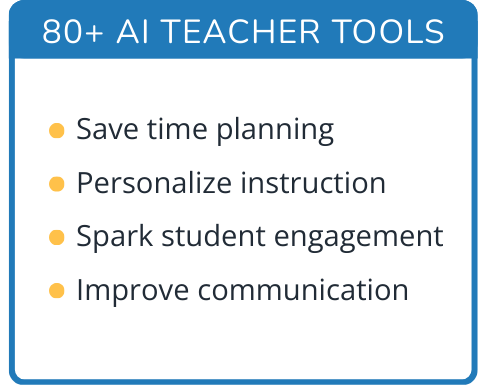Hi, what do you want to do?
Curated OER
Number Sense and Operations
In this number sense and operations worksheet, 5th graders solve 17 different types of problems that include estimation and determining the exact answer of an equation. First, they determine the sum of two numbers closest to one listed....
Curated OER
Estimating Pi as a Length
In this pi worksheet, students evaluate the curve of a quarter of a circle. They analyze the length of the curve, and explain that if the area under the curve is equal to pi, the length of the curve above is also equal to pi. Students...
Curated OER
One Hundred Things
Learners practice estimating by handling items in groups of ten. They visualize how much space 100 items, such as pennies, peas, or beans, will take up after holding 10 of them. Learners measure the difference in volume between 10...
Illustrative Mathematics
Estimating Square Roots
No calculators! Assure your learners that they can find the square root of a large number. All they need are two known squares close by and a table. Come up with an additional practice and your number crunchers will have it mastered in...
Curated OER
Estimating the Product to a Multiplication Problem
In this middle school mathematics instructional activity, students round whole numbers to the nearest leading digit and then multiply to obtain an estimate of the product. The one page instructional activity contains ten...
Curated OER
Lincoln Index
Students use a similar method to the Lincoln Index to estimate a population size.
Curated OER
Estimate Sums and Differences
In this word problem worksheet, 4th graders answer 6 word problems by writing mathematical sentences that show each answer. They work with distances and time.
Curated OER
A Day to Remember!
Students study math. In this real-life problem solving lesson, students work on their skills dealing with time and money. They work in small groups on various time and money word problems and by the final day they have a final problem...
Balanced Assessment
Fermi Number
A fermi number is a rough estimate of a quantity that is difficult or impossible to measure. Individuals design a process for making an estimation of a given scenario. For example, they determine a plan for estimating the number of...
Alberta Learning
Area and Perimeter of Irregular Shapes
Evaluate young mathematicians' understanding of area and perimeter with this series of three assessment tasks. Challenging students to not only calculate the area and perimeter of irregular shapes, but to explain in writing their...
Curated OER
Logistic Growth Model, Explicit Version
Via the concrete setting of estimating the population of the US, your algebra learners are introduced to a logistic growth model. Comparing and contrasting logistic, exponential, linear and quadratic models, to see which fits the data...
Concord Consortium
Fermi Weight
Wait, there is an estimate for how much that weighs. The resource contains three questions about weight. Using dimensional analysis and benchmarks, pupils determine a reasonable weight for trash, food, and a grain of salt.
Illustrative Mathematics
Eratosthenes and the Circumference of the Earth
The class gets to practice being a mathematician in ancient Greece, performing geometric application problems in the way of Eratosthenes. After following the steps of the great mathematicians, they then compare the (surprisingly...
Illustrative Mathematics
How Many Cells Are in the Human Body?
Investigating the large numbers of science is the task in a simple but deep activity. Given a one-sentence problem set-up and some basic assumptions, the class sets off on an open-ended investigation that really gives some...
CK-12 Foundation
Area Sums: Estimation with Rectangles
The more rectangles, the better the estimate. Using the interactive, pupils explore estimating the area under a curve using left-hand sums. Learners respond to challenge questions on how to get better estimates using the same technique.
EngageNY
Summarizing Deviations from the Mean
Through a series of problems, learners determine the variability of a data set by looking at the deviations from the mean. Estimating means of larger data sets presented in histograms and providing a way to calculate an...
Charleston School District
Evaluation of Roots
You mean the square root of five and five don't have the same value? Learners estimate the value of irrational roots. As they practice estimating the value, they increase their understanding of roots. The lesson is the fourth in a series...
EngageNY
Sampling Variability in the Sample Proportion (part 2)
Increase your sample and increase your accuracy! Scholars complete an activity that compares sample size to variability in results. Learners realize that the greater the sample size, the smaller the range in the distribution of sample...
EngageNY
Square Roots
Investigate the relationship between irrational roots and a number line with a resource that asks learners to put together a number line using radical intervals rather than integers. A great progression, they build on their understanding...
National Security Agency
Awesome Area - Geometry and Measurement
Break out those math manipulatives, it's time to teach about area! Capturing the engagement of young mathematicians, this three-lesson series supports children with learning how to measure the area of squares, rectangles, and other...
Curated OER
Compare Time
For this estimating time worksheet, 2nd graders solve 6 problems in which the time it takes to perform a specific task is estimated. Students choose an estimate from two answers.
Curated OER
Standard Units of Measure
Learners explore linear measurement. They choose appropriate measuring tools, measure three classroom items, and record their results. A class discussion ensues in which everyone decides the best way to present their data.
Curated OER
Checking Addition and Subtraction by Estimation
In this mathematics worksheet, young scholars solve various equations using different methods. They estimate each answer by checking the additions and subtractions given for each. Then, students write in the decision column wither...
Curated OER
Small Angle Calculations
Young scholars work with circles, angles and estimating angles in the night sky. In this circles and angles lesson, students practice measuring a degree using the circumference of a circle and apply the degree to determine a way to use...




























